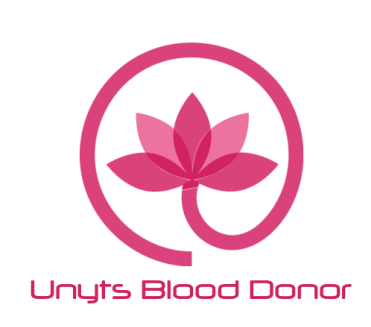In today’s digital age, having an engaging user experience is crucial for the success of any website. Top web design companies understand this and employ a variety of strategies to create captivating and user-friendly websites. From intuitive navigation to visually appealing designs, these firms employ a range of techniques to ensure that users have a positive experience while interacting with their websites. In this article, we will explore some of the key strategies used by top web design firms to create engaging user experiences.
The Importance of User Experience
Before delving into the strategies, it is important to understand why user experience matters. User experience refers to the overall experience a user has while interacting with a website or an application. A positive user experience not only enhances user satisfaction but also contributes to increased engagement, improved conversion rates, and higher customer retention. On the other hand, a poor user experience can lead to frustration, high bounce rates, and lost opportunities. Therefore, web design firms prioritize creating engaging user experiences to ensure the success of their clients’ websites.
Strategies for Creating Engaging User Experiences
1. User-Centric Design
One of the fundamental strategies used by top web design firms is adopting a user-centric approach. This involves understanding the target audience and designing the website to meet their needs and preferences. By conducting user research and usability testing, these firms gain valuable insights into user behavior and expectations, which they use to inform their design decisions. User-centric design ensures that the website is intuitive, easy to navigate, and visually appealing, leading to a seamless user experience.
2. Intuitive Navigation
Intuitive navigation is a crucial strategy used by top web design firms to ensure that users can easily navigate through a website and find the information they need. By employing intuitive navigation techniques, web design firms create a seamless and user-friendly browsing experience. Some common examples of intuitive navigation techniques include logical menu structures, descriptive labels for navigation links, and the use of breadcrumbs.
Logical menu structures organize website sections and pages in a clear and hierarchical manner, allowing users to navigate through the website effortlessly. Descriptive labels for navigation links provide users with a clear understanding of what each link represents, helping them make informed choices. Breadcrumbs, on the other hand, display the user’s current location within the website hierarchy, allowing them to navigate back to previously visited pages easily.
Below is a table illustrating examples of intuitive navigation techniques:
| Technique | Description |
| Logical Menu Structure | Organizes website sections and pages in a clear and hierarchical manner, enabling users to navigate through the website effortlessly. |
| Descriptive Labels | Provides clear and informative labels for navigation links, helping users understand the purpose of each link and make informed choices. |
| Breadcrumbs | Displays the user’s current location within the website hierarchy, allowing them to navigate back to previously visited pages with ease. |
By implementing these intuitive navigation techniques, web design firms ensure that users can navigate a website intuitively, find relevant information easily, and have a positive user experience.
3. Responsive Design
With the increasing use of mobile devices, responsive design has become a necessity. Top web design firms prioritize creating websites that are fully responsive and adapt seamlessly to different screen sizes. This ensures that users can access and interact with the website effectively, regardless of the device they are using. Responsive design not only enhances the user experience but also improves search engine rankings, as search engines favor mobile-friendly websites.
4. Visual Appeal
Visual appeal plays a vital role in creating engaging user experiences on websites. Top web design firms understand the importance of captivating visuals in capturing users’ attention and conveying the brand’s message effectively. They employ various techniques to enhance the visual appeal of websites. Some examples include the use of high-quality images, engaging videos, and visually pleasing color schemes. High-quality images help create a visually appealing website by providing eye-catching visuals that are relevant to the content or the brand. Engaging videos can be used to tell a story, showcase products, or provide instructional content, enhancing user engagement. Visually pleasing color schemes, such as complementary or harmonious color combinations, help create a cohesive and aesthetically pleasing visual experience. By employing these techniques, web design firms ensure that websites are visually appealing, making a lasting impression on users.
Below is a table illustrating examples of techniques used to enhance visual appeal in web design:
| Technique | Description |
| High-Quality Images | Using visually stunning, high-resolution images that are relevant to the content or brand, capturing users’ attention and enhancing visual appeal. |
| Engaging Videos | Incorporating videos that tell a story, showcase products, or provide instructional content, increasing user engagement and enhancing visual appeal. |
| Visually Pleasing Color Schemes | Selecting complementary or harmonious color combinations to create a cohesive and aesthetically pleasing visual experience. |
By implementing these techniques, web design firms create visually appealing websites that leave a positive impression on users and contribute to an engaging user experience.
5. Streamlined Content
Web design firms understand that users have limited attention spans and prefer websites that present information concisely. They employ strategies such as using clear headings, bullet points, and concise paragraphs to present content in a scannable format. By breaking down complex information into easily digestible chunks, these firms ensure that users can quickly grasp the key messages and navigate the website effortlessly.
6. Interactive Elements
Interactive elements are a key component of creating engaging user experiences on websites. These elements are designed to actively involve users and encourage them to interact with the content. Some popular interactive elements include sliders, carousels, accordions, and forms. Sliders allow users to browse through a series of images or content sections, providing an interactive way to showcase products or highlight key information.
Carousels offer a similar functionality, allowing users to swipe or click through a series of images or articles. Accordions are collapsible content sections that users can expand or collapse to reveal more or less information, providing a convenient way to organize and present content.
Forms enable users to submit information, such as contact details or feedback, directly on the website. By incorporating these interactive elements strategically, web design firms create dynamic and immersive user experiences, keeping users engaged and encouraging them to explore and interact with the website’s content.
Additionally, here’s a bullet list summarizing the main interactive elements used by top web design firms:
- Sliders: Allow users to browse through a series of images or content sections.
- Carousels: Enable users to swipe or click through a series of images or articles.
- Accordions: Collapsible content sections that users can expand or collapse to reveal more or less information.
- Forms: Provide a way for users to submit information, such as contact details or feedback, directly on the website.
- Interactive Maps: Allow users to explore locations, find directions, or interact with points of interest.
- Interactive Videos: Engage users by allowing them to interact with videos through features like clickable annotations or hotspots.
These interactive elements add interactivity, engagement, and a sense of control for users, enhancing their overall experience on the website.
7. Page Speed Optimization
Fast-loading websites are essential for a positive user experience. Top web design firms prioritize optimizing website performance to ensure quick loading times. They achieve this by optimizing images, minifying code, leveraging caching techniques, and utilizing content delivery networks (CDNs). By reducing page load times, these firms minimize user frustration and create a smooth and enjoyable browsing experience.
FAQs
FAQ 1: Why is user experience important for a website?
User experience is important for a website because it directly impacts user satisfaction, engagement, conversion rates, and customer retention. A positive user experience enhances the overall perception of a brand and encourages users to spend more time on the website, interact with its content, and take desired actions.
FAQ 2: How do top web design firms ensure user-centric design?
Top web design firms ensure user-centric design by conducting user research and usability testing. They gather insights into user behavior, preferences, and pain points, which they use to inform their design decisions. By understanding the target audience, these firms create websites that meet the needs and expectations of users.
FAQ 3: What is responsive design?
Responsive design is an approach to web design that ensures websites adapt and display correctly on different devices and screen sizes. A responsive website automatically adjusts its layout, images, and content to provide an optimal viewing experience, whether the user is accessing the site from a desktop computer, laptop, tablet, or smartphone.
FAQ 4: How do interactive elements enhance the user experience?
Interactive elements such as sliders, carousels, accordions, and forms engage users and encourage them to interact with the website. These elements provide opportunities for users to explore additional content, provide feedback, complete transactions, or perform other desired actions. By incorporating interactive elements strategically, web design firms create a more engaging and memorable user experience.
FAQ 5: How does page speed optimization impact user experience?
Page speed optimization is crucial for a positive user experience. Fast-loading websites minimize user frustration and ensure that users can access the content they seek quickly. Slow-loading websites can lead to high bounce rates, as users are likely to abandon a website that takes too long to load. By optimizing page speed, web design firms create a smooth and enjoyable browsing experience.
FAQ 6: What are some tools used by top web design firms to optimize website performance?
Top web design firms utilize a variety of tools to optimize website performance. Some commonly used tools include Google PageSpeed Insights, GTmetrix, Pingdom, and WebPageTest. These tools analyze various aspects of website performance and provide recommendations for improvement, such as optimizing images, minifying code, and leveraging caching techniques.
Creating engaging user experiences is a priority for top web design firms. By employing strategies such as user-centric design, intuitive navigation, responsive design, visual appeal, streamlined content, interactive elements, and page speed optimization, these firms ensure that users have a positive and memorable experience while interacting with websites. By prioritizing user experience, web design firms contribute to the success of their clients’ websites and help them achieve their business goals.




